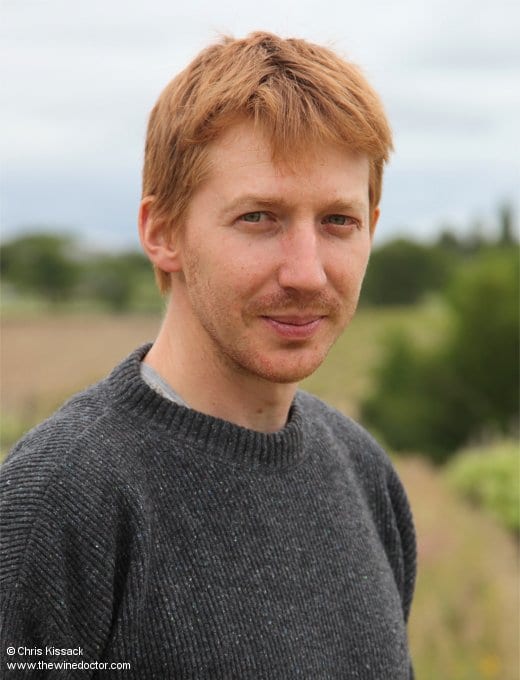Pierre Ménard
“Chenin with botrytis is a very good signature of a vintage, but dry Chenin is much more expressive of the place it comes from.” Pierre Menard’s words hung momentarily in the warm air, before drifting out across the vines and down over the slopes of soil and schist. As they did so a memory of Claude Papin suddenly flashed into my mind. We were seated at his kitchen table, and Claude was rapidly sketching out a graph to illustrate a correlation between terroir expression and botrytis attack. It was perhaps 15 or 16 years ago, but Pierre’s words could have been uttered on that very same day, so clearly did they echo Claude’s teachings.
Botrytis has long been seen as a friend to Anjou, and rightly so. For years and years the region’s reputation has rested on an array of off-dry and overtly sweet moelleux and liquoreux styles, from soft and golden Anjou Blanc right up to the most serious and sugary styles from the Coteaux du Layon, Chaume, Bonnezeaux and Quarts de Chaume. Even Savennières was once largely renowned for sweet and off-dry wines, the shift to dry wines having taken hold only during the last couple of decades. Today, however, a number of up-and-coming young vignerons have recognised the negative impact botrytis can have on a dry wine, and they see the precision and energy that can be found in vinifying Chenin Blanc grown on the slate and schist of western Anjou totally and truthfully dry, with not a whisper of botrytis in the blend. Among their number are Emmanuel Ogereau and Eric Morgat, among others. And Pierre Ménard too, it seems.
In this profile I describe Pierre’s brief ascendency to become, in my mind, one of the most significant young vignerons in Anjou today.

